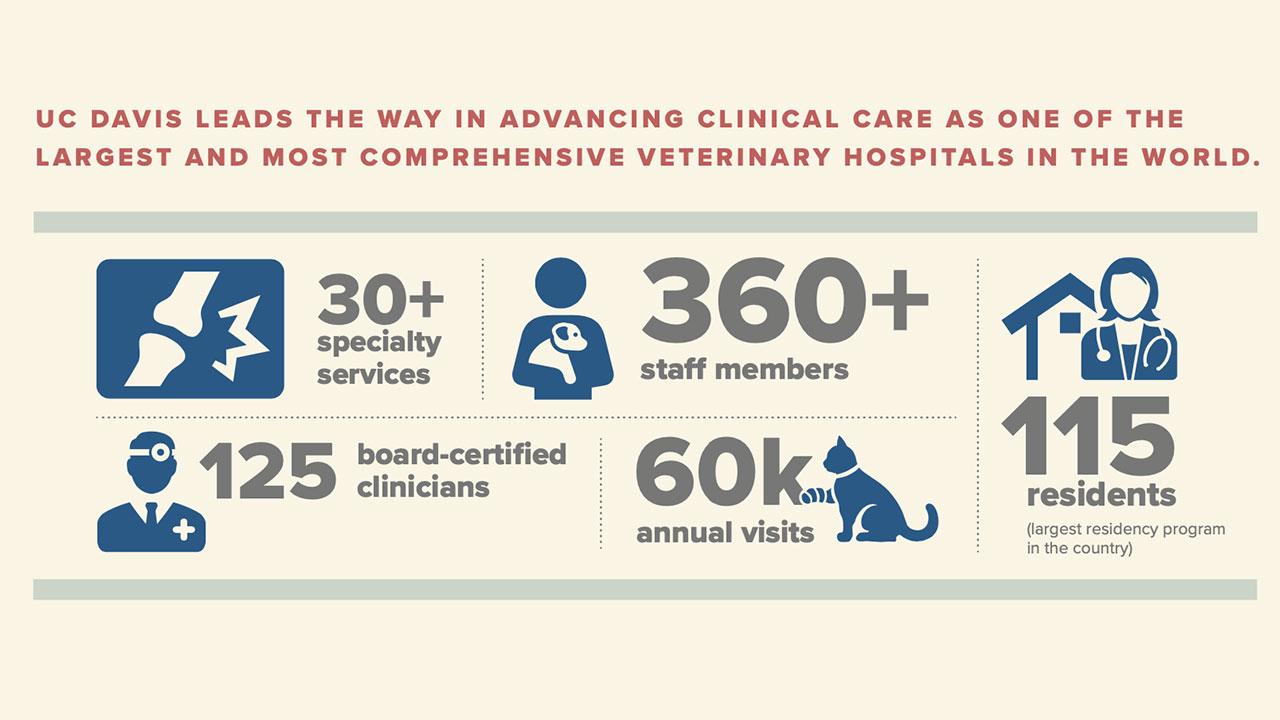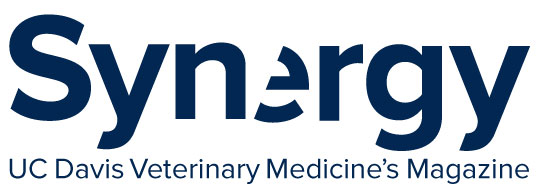
Clinical Advances

Reaching a Cure
For nearly a decade Dr. Boaz Arzi has led the effort to cure cats of a painful oral inflammatory disease known as feline chronic gingivostomatitis (FCGS). A novel treatment technique for FCGS using stem cells has moved into international clinical trials and closer to final approval by the U.S. Food and Drug Administration (FDA).
Arzi pursued an idea for treating FCGS based on the theory that stem cells could immune modulate, or “jumpstart,” the immune system and reduce or cure the painful inflammation in a cat’s mouth. Stem cell therapy has been used in both human and veterinary medicine for a variety of chronic inflammatory diseases, but it had never been used to treat FCGS.
Through the school’s Veterinary Institute for Regenerative Cures, Arzi established an initial clinical trial. The success from that trial was published in 2015 and Arzi found himself fielding inquiries from veterinarians and cat owners around the world, eager to learn more about this new treatment.
In 2016, the trial was opened for patients at the Cornell University College of Veterinary Medicine, as well as private dental specialty clinics in Mill Valley, California and Lake Oswego, Oregon. That multicenter pilot trial concluded in early 2020 and found that stem cells received within 24 hours of initial shipment retained their viability, phenotype, and function to successfully treat FCGS. It also showed that 72% of the cats treated exhibited positive results, an identical success rate proven in previous trials conducted exclusively at UC Davis.
Arzi’s team received patent approval for the stem cell product in Europe and is currently negotiating approval in the United States. The work was licensed through UC Davis to a stem cell producer in California, and the team is now collaborating with them on a country-wide clinical trial approved by the FDA. In addition, the trial has now gone international – opening at the University of Guelph in Ontario, Canada – to help move the product toward final FDA approval.

Expanding Equine Fertility
Horse owners have another resource at UC Davis to help with advanced reproduction issues thanks to the addition of Dr. Pouya Dini to the Equine Reproduction Service team. He joins Dr. Ghislaine Dujovne as a faculty leader of the service and brings technological expertise to expanding in vitro embryo production. He and faculty researcher Dr. Stuart Myers hope to make the Myers-Dini Laboratory more commercially viable to assist referring veterinarians and clients.
Their laboratory can complete an in vitro fertilization process known as intracytoplasmic sperm injection (ICSI). This technology requires technical skills that are typically not offered by veterinary practices and includes: egg aspiration using ultrasound guidance; in vitro egg culture; micromanipulation and microinjection of eggs with a single selected sperm; and embryo culture in the laboratory, with freezing, and transfer of embryos to recipient mares.
The service also hopes to work more with the school’s Veterinary Genetics Laboratory to assist clients and referring veterinarians with embryo testing. Dini hopes to advance pre-implantation embryo biopsies to help clients detect genetic diseases, and determine hair color and sex of their foals, as opposed to a 60-day wait for ultrasound to determine sex once an embryo is implanted.
Recently, the service upgraded its clinical and research space at the school’s Center for Equine Health. The adjacent laboratory and clinical spaces offer “benchtop to bedside” clinical translation – a hallmark of the future Veterinary Medical Center.

Safer Surgeries
Horse owners have many more options these days when it comes to surgery. Thanks to constantly evolving techniques and technology, equine surgeons use new approaches that result in decreased mortality for the patient and decreased cost for the client.
“We now have the ability to do more types of surgeries under standing sedation,” said Dr. Scott Katzman, chief of the Equine Surgery and Lameness Service. “Another major change is the increased number of minimally invasive surgeries that are being performed.”
One of the most common standing surgeries is laryngoplasty, or “tie back” surgery, which improves airflow in exercising horses.
“Performing the surgery with the horse standing allows for better endoscopic visualization of the larynx, resulting in more accurate abduction of the affected cartilage to open the airway,” said Katzman. “This negates the risks associated with general anesthesia and is also more economical for the owner.”
For minimally invasive procedures, laparoscopy is most often used to remove normal ovaries (for behavioral modification) or pathologic ovaries (for tumor removal) in mares. In males, standing laparoscopy is most frequently used for cryptorchidectomy (removal of abdominally retained testicles).
While it has been nearly a decade since the introduction of the electrosurgical bipolar vessel and tissue sealing devices, Katzman says the instruments have revolutionized surgeons’ abilities to perform laparoscopic procedures in horses. They allow for control of hemorrhage as well as transection of tissues without the need for more difficult and time-consuming techniques like laparoscopic suturing and knot tying.
Through all these advancements in equine surgeries, there’s another aspect to Katzman’s job after more than 15 years in the profession that excites him the most.
“Hands down, teaching students and surgery residents is the most satisfying part of my job,” he said.

Advancing Community Medicine
Dr. Ilana Halperin, chief of the UC Davis veterinary hospital’s Community Medicine Service, recently became a Diplomate of the American Board of Veterinary Practitioners in the canine and feline practice specialty. With only 312 veterinarians nationwide with this certification, Halperin is now one of few board-certified general practitioners. She feels that the certification allows her to provide the best possible care to her patients and have many helpful options for her clients.
“It is important to me to engage in lifelong learning and push myself to do my best,” said Halperin. “Working towards ABVP certification gave me a goal that furthered my medical knowledge and allowed me to grow professionally.”
Halperin’s expanded body of knowledge required for the advanced certification also enhances the experience for students rotating through Community Medicine in their final year of veterinary school. The certification requires at least five years of clinical practice (Halperin has 17), acceptance of two case reports/publications within the past five years, and successful completion of a rigorous board examination.
Even if students are not interested in pursuing a general practice career, the rotation offers the opportunity to practice taking primary case management responsibility, hands-on learning, and client communication.
“No matter what area of veterinary medicine you go into, appropriate case-specific decision making and communication skills are valuable,” said Halperin. “And you never know, you may fall in love with general practice and change your mind.”
